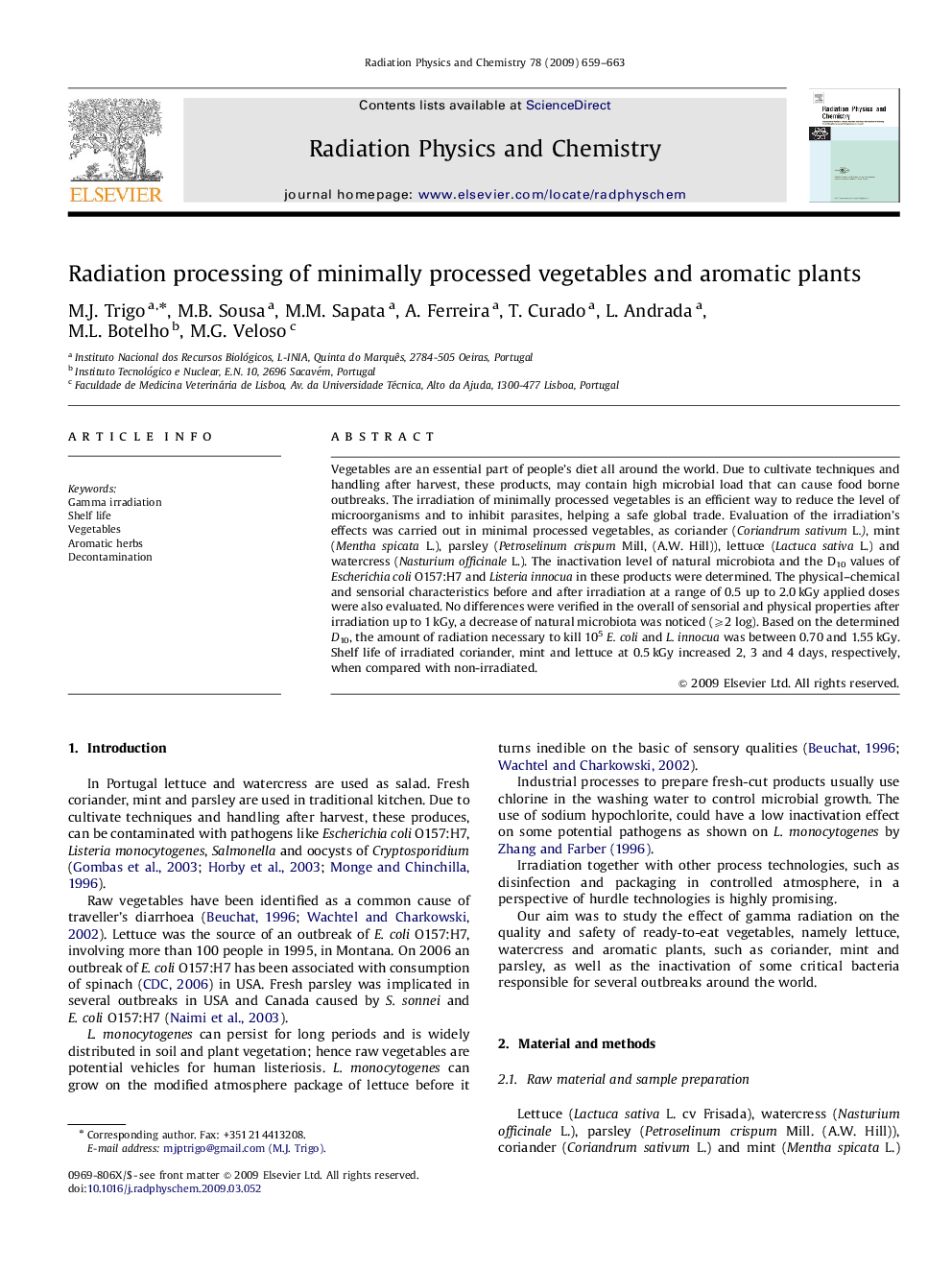| Article ID | Journal | Published Year | Pages | File Type |
|---|---|---|---|---|
| 1883222 | Radiation Physics and Chemistry | 2009 | 5 Pages |
Vegetables are an essential part of people's diet all around the world. Due to cultivate techniques and handling after harvest, these products, may contain high microbial load that can cause food borne outbreaks. The irradiation of minimally processed vegetables is an efficient way to reduce the level of microorganisms and to inhibit parasites, helping a safe global trade. Evaluation of the irradiation's effects was carried out in minimal processed vegetables, as coriander (Coriandrum sativum L.), mint (Mentha spicata L.), parsley (Petroselinum crispum Mill, (A.W. Hill)), lettuce (Lactuca sativa L.) and watercress (Nasturium officinale L.). The inactivation level of natural microbiota and the D10 values of Escherichia coli O157:H7 and Listeria innocua in these products were determined. The physical–chemical and sensorial characteristics before and after irradiation at a range of 0.5 up to 2.0 kGy applied doses were also evaluated. No differences were verified in the overall of sensorial and physical properties after irradiation up to 1 kGy, a decrease of natural microbiota was noticed (⩾2 log). Based on the determined D10, the amount of radiation necessary to kill 105E. coli and L. innocua was between 0.70 and 1.55 kGy. Shelf life of irradiated coriander, mint and lettuce at 0.5 kGy increased 2, 3 and 4 days, respectively, when compared with non-irradiated.
